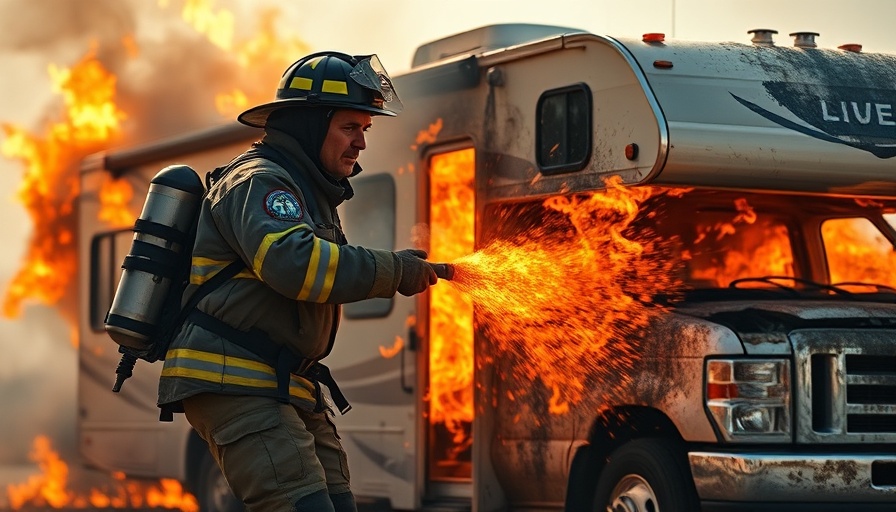
Understanding the Aftermath of SoCal Fires: A Comprehensive Guide for RV Owners
The catastrophic wildfires that ravaged Southern California in early 2025 have alternately been described as unpredictable and devastating. Amid widespread devastation, RV owners, in particular, find themselves facing an uphill battle—one that involves insurance claims, emotional distress, and recovery planning. It’s critical for these individuals to understand their next steps and how to navigate the complexities that arise after such significant loss.
Initial Steps Immediately After Fire Damage
Returning to the scene of a fire is not just physically challenging, but emotionally taxing, especially for RV owners who view their vehicles as cherished assets. As authorities allow residents back into affected areas, it's essential to prioritize safety. Protective equipment such as an N95 mask, gloves, and sturdy footwear are absolute necessities when sifting through debris.
Given the risk posed to pets in fire-damaged areas, it’s best to not take them along during this initial phase. Leaving pets with a trusted friend can prevent unnecessary stress and potential injuries as they may behave erratically in the chaos.
Documenting Fire Damage: The Key to Your Insurance Claim
Once safe to enter the area, documentation becomes paramount. Capturing photographic and video evidence of the damage is a crucial first step in the insurance claim process. Here’s a quick checklist of what to document:
- Interior and exterior views of the RV, focusing on major damage points such as the roof and undercarriage.
- Specifics on any electrical or plumbing damage, which can affect the overall functionality of the vehicle.
- A comprehensive list of any personal items that were lost or damaged, including non-traditional RV items such as outdoor gear.
Having this information ready can ease the claims process significantly. An insurance agent can help guide you through the particulars of what is needed, including filing a “Proof of Loss” form, which presents an inventory of damaged items.
Considerations Before Disposing of Damaged Items
A common mistake after a fire is prematurely discarding damaged belongings. Preserving items until an insurance adjuster can perform an inspection is crucial. Adjusters need to verify damages to establish their value and determine reimbursement amounts. If your RV can still be salvaged, ensure you cover it appropriately to prevent further damage.
Engaging with Local Resources for Support
In the aftermath of destruction, local resources—often set up by city officials or community organizations—can provide desperately needed assistance, including helping displaced RV owners with paperwork and offers of shelter. In Los Angeles, disaster resource centers can help guide residents in accessing fire reports and determining necessary follow-up steps regarding assistance.
Communicating with Financial Institutions
If there is a loan on your RV, communication with your lender is non-negotiable. They will need to be informed of the incident, and understanding how to navigate potential ramifications of damaged collateral is important. Being proactive can save RV owners from additional financial stress in the future.
In conclusion, while the emotional and logistical challenges of recovering from fire damage to an RV may feel insurmountable, effective planning can significantly ease the burden. By prioritizing safety, documenting damages thoroughly, and engaging with local support resources, RV owners can work towards rebuilding their lifestyle. The journey ahead may be long, but with resilience and the right resources, it's entirely navigable.
 Add Row
Add Row  Add
Add 




Write A Comment